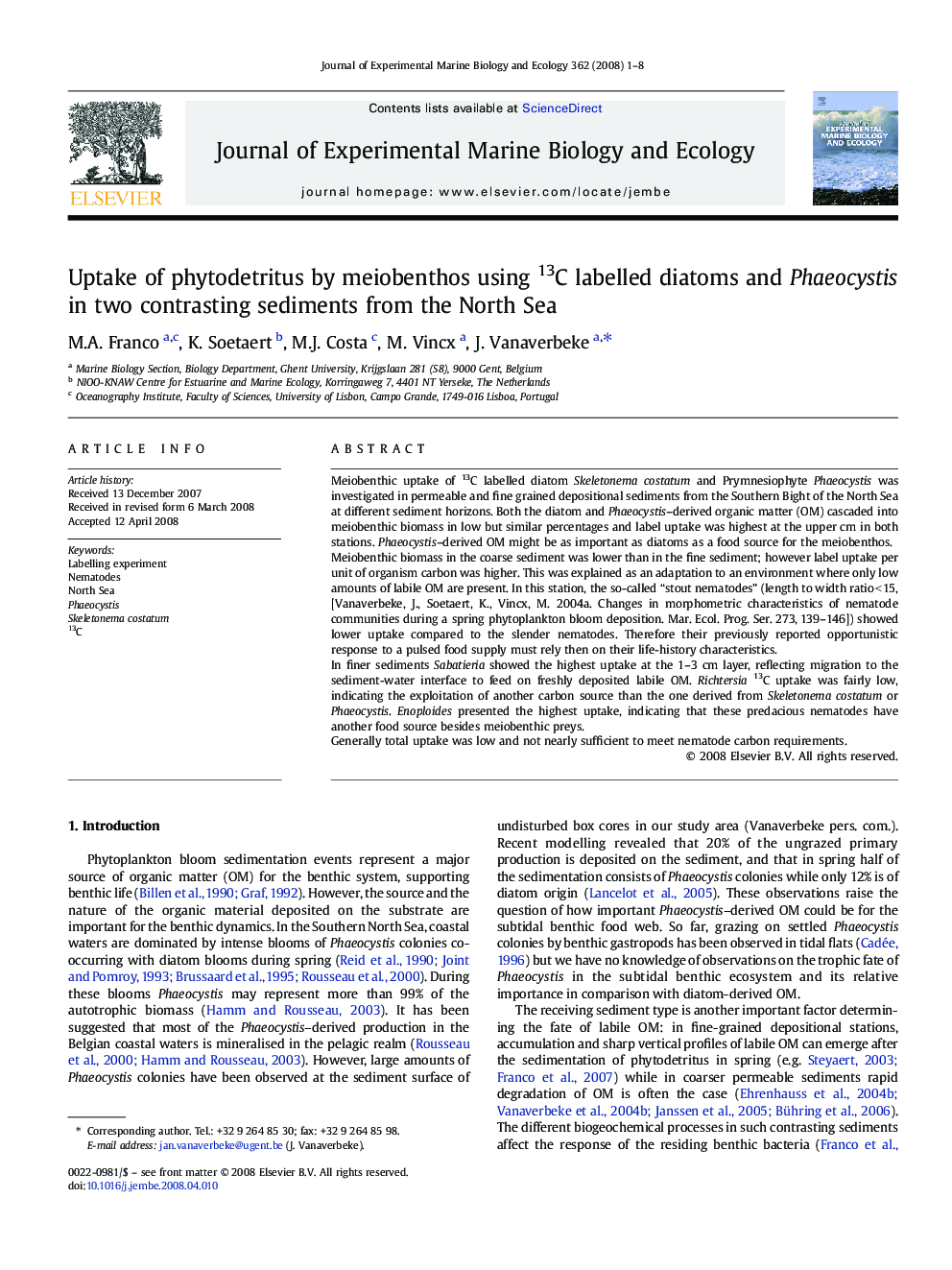| کد مقاله | کد نشریه | سال انتشار | مقاله انگلیسی | نسخه تمام متن |
|---|---|---|---|---|
| 4397290 | 1305877 | 2008 | 8 صفحه PDF | دانلود رایگان |

Meiobenthic uptake of 13C labelled diatom Skeletonema costatum and Prymnesiophyte Phaeocystis was investigated in permeable and fine grained depositional sediments from the Southern Bight of the North Sea at different sediment horizons. Both the diatom and Phaeocystis–derived organic matter (OM) cascaded into meiobenthic biomass in low but similar percentages and label uptake was highest at the upper cm in both stations. Phaeocystis–derived OM might be as important as diatoms as a food source for the meiobenthos.Meiobenthic biomass in the coarse sediment was lower than in the fine sediment; however label uptake per unit of organism carbon was higher. This was explained as an adaptation to an environment where only low amounts of labile OM are present. In this station, the so-called “stout nematodes” (length to width ratio < 15, [Vanaverbeke, J., Soetaert, K., Vincx, M. 2004a. Changes in morphometric characteristics of nematode communities during a spring phytoplankton bloom deposition. Mar. Ecol. Prog. Ser. 273, 139–146]) showed lower uptake compared to the slender nematodes. Therefore their previously reported opportunistic response to a pulsed food supply must rely then on their life-history characteristics.In finer sediments Sabatieria showed the highest uptake at the 1–3 cm layer, reflecting migration to the sediment-water interface to feed on freshly deposited labile OM. Richtersia13C uptake was fairly low, indicating the exploitation of another carbon source than the one derived from Skeletonema costatum or Phaeocystis. Enoploides presented the highest uptake, indicating that these predacious nematodes have another food source besides meiobenthic preys.Generally total uptake was low and not nearly sufficient to meet nematode carbon requirements.
Journal: Journal of Experimental Marine Biology and Ecology - Volume 362, Issue 1, 18 July 2008, Pages 1–8